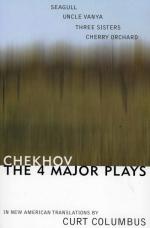|
This section contains 1,047 words (approx. 3 pages at 400 words per page) |

|
In this essay, Rayfield provides an overview of Chekhov's play.
Any comedy where the young hero destroys his life's work and then himself, where the heroine is abandoned pregnant and unhinged, while the survivors bask on in their own egotism, must be considered highly innovatory. Apart from its black comedy, however, Chekhov's The Seagull has many other modern features. It is full of "intertextuality," incorporating or alluding to a great deal of Hamlet, to Faust, to Guy de Maupassant, and to Chekhov's own prose. It was also "interactive" theatre: many characters, incidents, props, and lines were taken from Chekhov's own life and his social circle, and he took some care to see that they experienced the full impact of this fictionalization by being invited to the first performance. It is "deconstructive," since it is a play about the futility of the theatre, in which the old art...
|
This section contains 1,047 words (approx. 3 pages at 400 words per page) |

|




